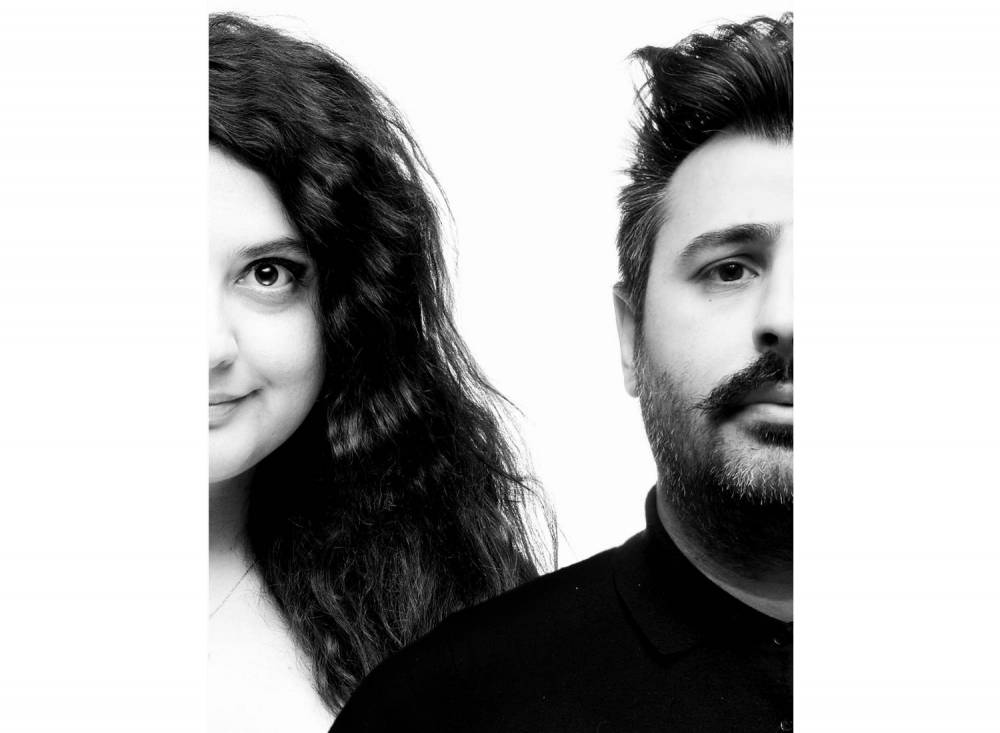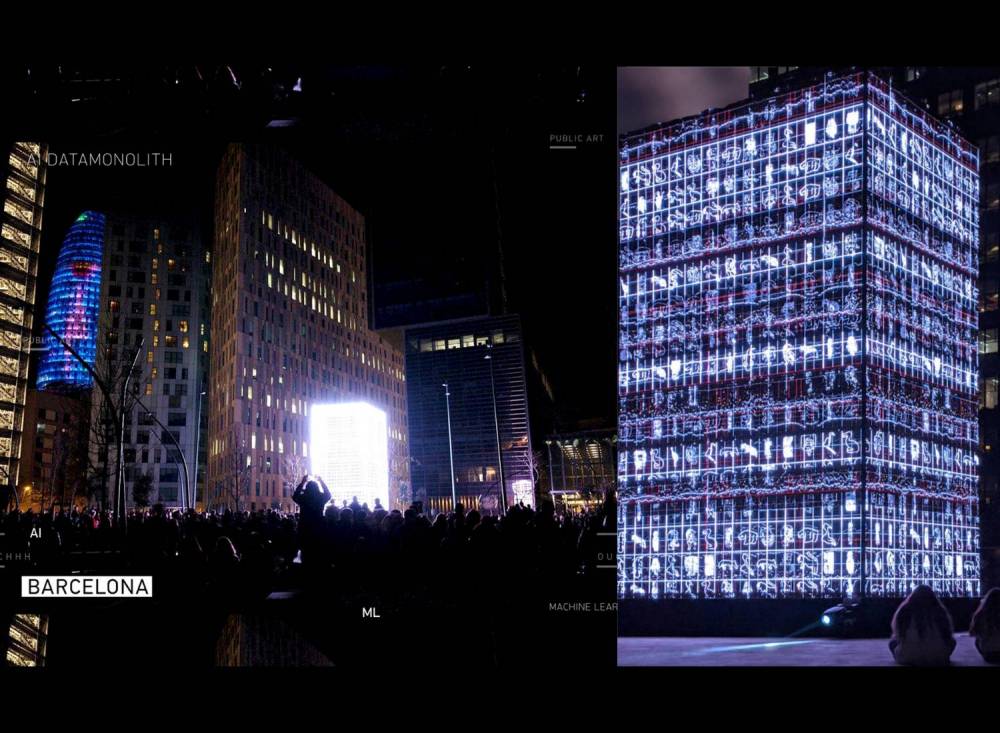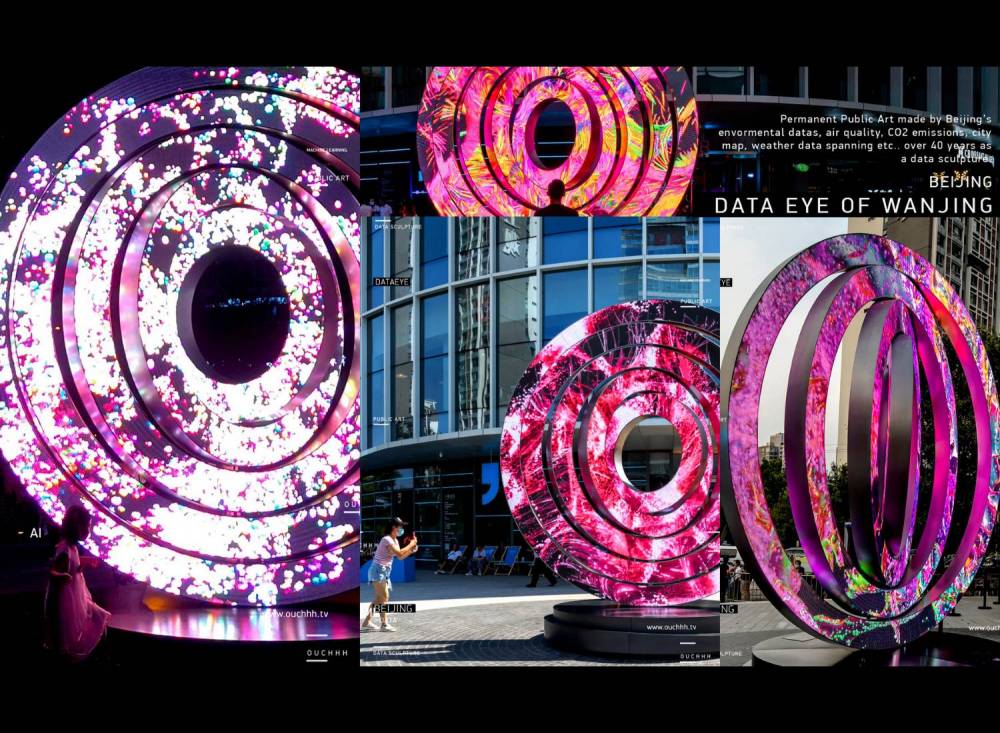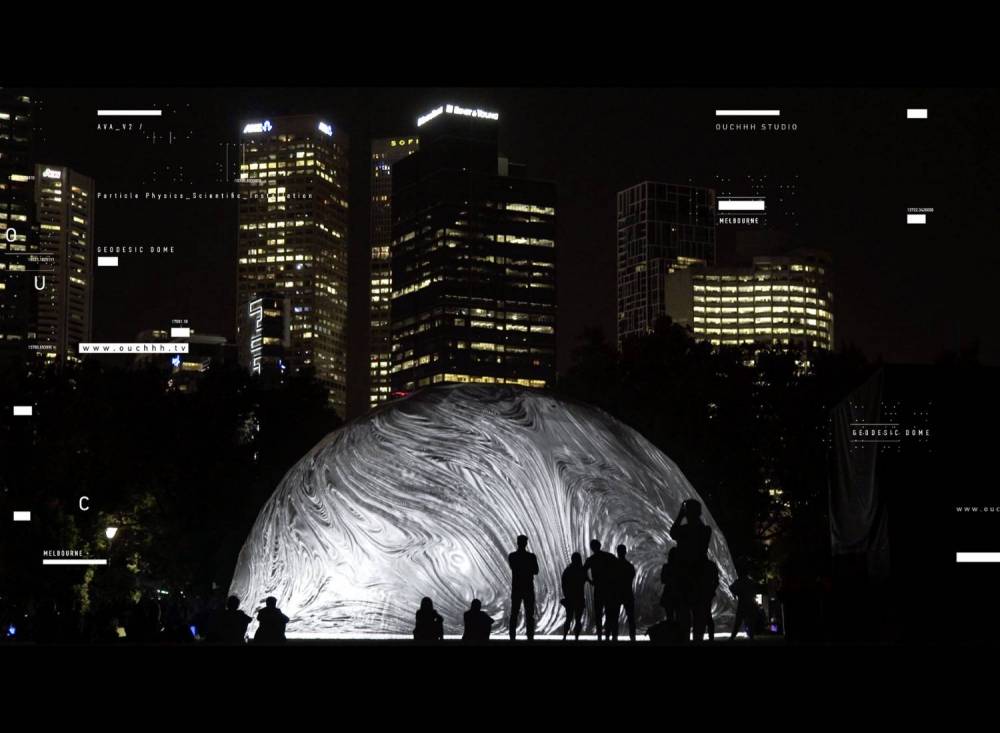Out of this world: Pushing the boundaries of AI with Ouchhh
Somewhere in between art, science, technology, and new media, Ouchhh has found its place. Working with highly advanced artificial intelligence, the new media art studio creates magical immersive art installations. Ouchhh has made a name for itself over the past years by designing and programming prestigious projects such as the world’s biggest AI data sculpture. We had a chat with Ouchhh-founder Ferdi Alici about the very beginnings of working with AI, its boundaries, and future projects.
Ouchhh just celebrated its 10th anniversary. When you think back to the very beginnings, how did it all start?
The initial members of Ouchhh all came from the Visual Communication Design Faculty at the same university in Istanbul, and we started the studio under the influence of our university mentor.
Over the past 10 years, the studio has grown, and the scale of our work has grown with us. The team currently consists of 25 people, including engineers, academics, creative coders, designers, media artists, motion graphic designers, and other talented individuals from a variety of fields. We work together with a shared vision in mind: “knowledge” is the key to creating a magnificent public experience.

How has the journey been so far? Can you remember some highs and lows of the Ouchhh-career?
Our journey has always been forward-minded. I think it can be analyzed from two viewpoints: creativity and business. From a creative standpoint, I can say that the Ouchhh-progress over the past 10 years has been about pioneering ideas and design in our works.
Ouchhh is a new media studio combing art, science, architecture, and AI. How would you describe your work in three words?
Extraordinary, out of this world, cutting-edge.
How would you describe the relationship between architecture, art, science, neuroscience, and AI?
Art, science, architecture, neuroscience, and AI have been treated as separate disciplines, but when they are studied together it’s clear to see the effect one has on the other. Also, mixing disciplines generates a new way of thinking for both, artists and audiences. Science and scientific ideas have long inspired art and artists, from Picasso and Leonardo Da Vinci to Dali and Samuel Morse. They demonstrated how scientific ideas can inspire impeccable art. We use AI data to integrate all art, science, and technology disciplines, and we focus on creating immersive experiences that allow people to discover new technological models and to visualize future perspectives. We want to break down existing barriers and go beyond what seems to be the limits of architecture, science, art, media art, technology, and AI.
When are you confronted with the boundaries of art in your work?
Boundaries in creation could exist but there are no limits to experiences. Encountering limits is not the type of our studio. We always love to see our limits beyond the borders.

Can you tell us about your workflow and what tools are considered essential for it?
For example, when working on “Data Gate”, we collaborated with scientists and academicians to create this hybrid data sculpture. We built our teams such as data scientists, AI coders, and animation designers as an in-house team.
The “Data Gate” is an aesthetic approach to Artificial Intelligence-powered exploration of the Kepler Data. The data of Kepler mission is a very large spreadsheet comprised of information dedicated to the detected exoplanets. Each table in these spreadsheets contains around a hundred columns. Each of these columns represents an aspect, a feature of these planets.
In addition to these spreadsheets, the publicly available data includes the raw light curve readings, which were used in the detection of the aforementioned planets. The data doesn’t readily make these planets detectable, but various AI methods have been used to analyze and extract planetary data from these light curves. Due to its complexity and size, it is impossible to visualize these as-is. So we proposed an AI-based approach to interpret and aestheticize this information. Our aim is to analyze this data through AI, strictly for an alternative, visual representation of this data. This project does not and cannot propose to detect new planets, which has been excellently done and publicly made available.
Which Cinema 4D tools or features are essential for your work?
Cinema 4D is a nice software for embedding data into the 3D data paintings with xparticles, Voronoi Fracture and many more.
One of your most prestigious projects is the AI DATAMONOLITH which combined the world’s oldest ancient messages with the latest AI data. Can you tell us about the core creative idea for this project?
We collected data from Göbekli Tepe, the world’s oldest archaeological site, which existed about 7,000 years before the Stone Age, and created a software to create visuals based on the topographical data and other information about the site. And, we used GAN to train about 3 billion pixels. We trained AI with that data and developed a data sculpture to create a digital “monolith”. Thousands of years ago, people were drawing on that stone monolith and, thousands of years later, an algorithm that learned from those ancient drawings, created new pictures on a digital monolith. With this work, we could experience the hidden messages of ancient people and the magnificent connections between different times and space.
What technical challenges had to be mastered for the project?
The difficulty in creating works using technology is that, even though you have ideas, you sometimes cannot find suitable devices that have the required performance or that meet your financial requirements. For example, we couldn’t find a suitable brain wave headset for our latest project called ‘’ Say Superstrings’’. In similar situations, the project’s research and development is getting longer but the result, therefore, is getting perfect. In the end, you find the best option or solution in your project. Later, we found a brain headset developed in the U.S and we were finally able to carry out this project.
Were there any “unforgettable moments“ with regard to this project?
Every project does have unforgettable moments. Every time we work with AI, we are excited to see the outcome and what the final result will be.

Working in the field of AI you basically are one step ahead of analog reality. What inspires you to always keep on pushing further?
With AI, you have to teach the computer to do things in a certain way and to create certain things using a special kind of algorithm. Only by teaching the computer, there will be some kind of output. Working with AI always is super exciting. AI is like a baby, so we have to feed it properly. When you want to create something that is “beyond your expectations”, you have to feed AI with different things. This is one of the most enjoyable parts of creating things using AI.
You have created artworks for every continent. What are your future plans for Ouchhh?
We will continue to pioneer in the new media field with unique art projects.
What does the future of AI look like?
Computer power will continue to grow, and therefore algorithms and AI will become more advanced. People are not aware and won’t realize that AI will suddenly and fundamentally change their world.

Ouchhh will speak at the Forward Online Festival and will talk about current projects and about discovering new technologies.